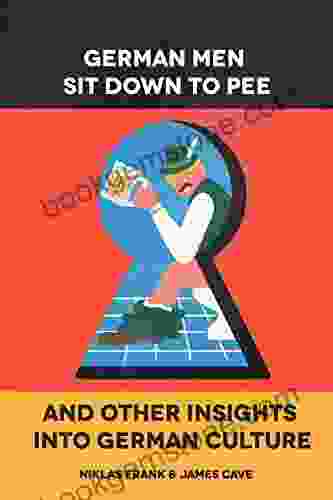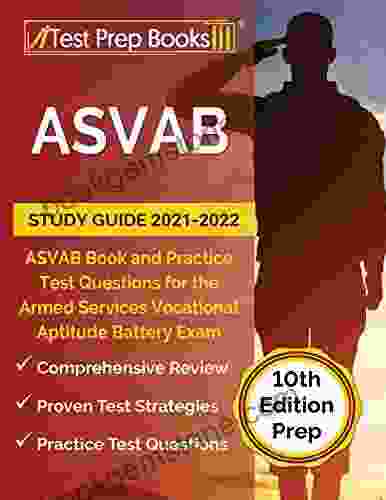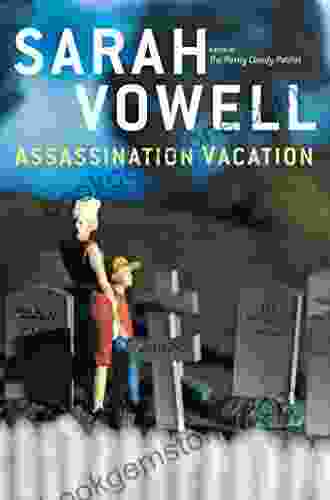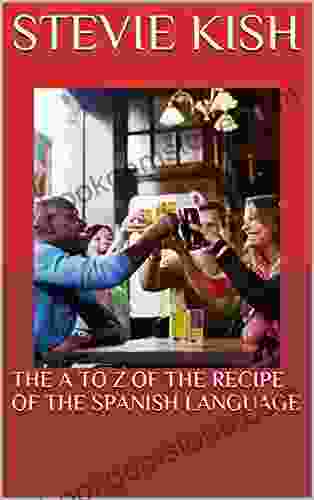The Genesis of the Spanish Language: A Journey Through History, Evolution, and Cultural Influences

4.5 out of 5
| Language | : | English |
| File size | : | 2086 KB |
| Print length | : | 343 pages |
| Lending | : | Enabled |
| Screen Reader | : | Supported |
The Spanish language, with its enchanting melodies and expressive vocabulary, is a testament to the rich tapestry of human history and cultural exchange. Its origins lie in the depths of time, where ancient civilizations and linguistic innovations intertwined. This article delves into the captivating genesis of the Spanish language, tracing its evolutionary journey through the ages and exploring the profound cultural influences that have shaped its unique character.
Origins in the Cradle of Civilization
The story of Spanish begins in the Iberian Peninsula, a region that has long served as a crossroads of cultures. Around 2,000 years ago, the Romans conquered the Iberian Peninsula, bringing with them their own language, Latin. Over time, Latin gradually evolved into Vulgar Latin, the spoken language of the Roman Empire's provinces.
In the 5th century AD, the Western Roman Empire collapsed, and the Iberian Peninsula was divided into various kingdoms. These kingdoms, influenced by different cultures and languages, began to develop their own distinct dialects of Vulgar Latin. One of these dialects, known as Ibero-Romance, emerged as the precursor to Spanish.
The Influence of Arabic and Other Cultures
In the 8th century AD, the Iberian Peninsula was conquered by the Umayyad Caliphate, bringing with it the influence of Arabic. Arabic words and grammatical structures became incorporated into Ibero-Romance, leaving a lasting imprint on the Spanish language. This period of Arabic influence also witnessed the rise of the Mozarabic language, a unique blend of Arabic and Ibero-Romance spoken by Christians living under Muslim rule.
In addition to Arabic, other cultures also left their mark on the Spanish language. The Visigoths, a Germanic people who ruled parts of the Iberian Peninsula, contributed words related to law and administration. The Basques, an ancient people from the Basque Country, influenced the vocabulary of Spanish related to nature and agriculture.
The Reconquista and the Rise of Castilian
The Reconquista, a centuries-long struggle to reconquer the Iberian Peninsula from Muslim rule, played a pivotal role in the development of Spanish. The Christian kingdoms of northern Spain gradually expanded their territories, bringing their own dialects of Ibero-Romance with them. Over time, one of these dialects, Castilian, emerged as the dominant language of the peninsula.
Castilian became the official language of the Kingdom of Castile and later of the unified Kingdom of Spain. The spread of Castilian was also aided by the Reconquista and the rise of the Spanish Empire, which brought the language to vast territories across the globe.
The Evolution of Modern Spanish
From the 16th century onwards, Spanish underwent significant changes in its grammar, vocabulary, and pronunciation. The standardization of the language through the publication of grammars and dictionaries contributed to its consistency and widespread use. The expansion of the Spanish Empire during the Golden Age led to the incorporation of new words from indigenous languages in the Americas and other parts of the world.
In the 19th century, Spain experienced a period of political and social upheaval, which also influenced the development of Spanish. The rise of nationalism and regionalism led to the emergence of regional dialects and the recognition of Catalan, Basque, and Galician as official languages in Spain.
The Spanish Language Today
Today, Spanish is spoken by over 500 million people worldwide, making it the second most widely spoken language after Mandarin Chinese. It is the official language of 20 countries and is used in various international organizations and institutions. Spanish literature, art, and music have made significant contributions to world culture.
Modern Spanish is a vibrant and dynamic language that continues to evolve. It is constantly being influenced by new technologies, social trends, and global events. The rise of the Internet and social media has led to the emergence of new words and expressions, as well as the spread of Spanish to non-native speakers worldwide.
Cultural Influences on Spanish
Throughout its history, Spanish has been shaped by the cultural influences of the regions where it is spoken. In Spain, different regions have developed their own unique dialects and variations of the language, reflecting their distinct histories and traditions.
In Latin America, Spanish has been influenced by the indigenous languages of the Americas, as well as by the cultures of African and European immigrants. This has resulted in a rich diversity of Spanish dialects, each with its own unique flavor.
Spanish in the Global Arena
The Spanish language has played a significant role in global communication and cultural exchange. As the language of the Spanish Empire, it was spread to vast territories across the Americas, Africa, and Asia. This has left a lasting legacy in the form of Spanish-speaking communities and cultural influences in many parts of the world.
Today, Spanish is a major language of international business, diplomacy, and education. It is one of the official languages of the United Nations and other international organizations. The spread of Spanish to non-native speakers has also contributed to its growing importance in global communication.
The Spanish language is a testament to the interconnectedness of human history and the power of language to adapt and evolve. Its origins in the Iberian Peninsula and its subsequent journey through time have been marked by cultural influences from around the world. Today, Spanish is a vibrant and dynamic language that continues to shape and be shaped by the societies where it is spoken.
The genesis of the Spanish language is a story of linguistic innovation, cultural exchange, and global significance. Its enduring legacy is a testament to the power of language to connect people, bridge cultures, and inspire creativity.
4.5 out of 5
| Language | : | English |
| File size | : | 2086 KB |
| Print length | : | 343 pages |
| Lending | : | Enabled |
| Screen Reader | : | Supported |
Do you want to contribute by writing guest posts on this blog?
Please contact us and send us a resume of previous articles that you have written.
 Best Book
Best Book Page Flip
Page Flip Bookshelf
Bookshelf Literary loom
Literary loom Chapter
Chapter Bookish
Bookish PageTurner
PageTurner Bibliophile
Bibliophile Story
Story Inkwell
Inkwell Bookworm
Bookworm Labyrinth
Labyrinth Plot Twist
Plot Twist Prose
Prose Paperback
Paperback Storyteller
Storyteller Sanctuary
Sanctuary Fiction
Fiction Reading
Reading Chronicle
Chronicle Read
Read Joel J Lerner
Joel J Lerner Neha Gupta
Neha Gupta Monica Sorrenson
Monica Sorrenson Robert Collins
Robert Collins Dr Lew Deitch
Dr Lew Deitch Kira Salak
Kira Salak Michel Roy
Michel Roy Rico Austin
Rico Austin Konstantinos Mylonas
Konstantinos Mylonas Topher Donahue
Topher Donahue Narasimha Karumanchi
Narasimha Karumanchi Nielson Phu
Nielson Phu Katherine Nouri Hughes
Katherine Nouri Hughes Wayne J Lutz
Wayne J Lutz Anuj Tikku
Anuj Tikku Richard Palmer
Richard Palmer Lance Pototschnik
Lance Pototschnik Douglas J Gould
Douglas J Gould Luca Brambilla
Luca Brambilla John Merriam
John Merriam Khaled Hosseini
Khaled Hosseini Osasumwen Asoro
Osasumwen Asoro Kathleen Kirkland
Kathleen Kirkland Jonny Zucker
Jonny Zucker Andy Russell
Andy Russell Francis J Buckley
Francis J Buckley Greg Breining
Greg Breining Stephan Orth
Stephan Orth Lingo Mastery
Lingo Mastery Magnus D Jango
Magnus D Jango Nachole Johnson
Nachole Johnson Bruce Hunt
Bruce Hunt Evie Litton
Evie Litton Simon Hart
Simon Hart Steve Schwartz
Steve Schwartz Ilona Andrews
Ilona Andrews Susan Weese
Susan Weese Robert Finch
Robert Finch Tania N Shah
Tania N Shah Jay Kirk
Jay Kirk Rob Pate
Rob Pate Xavier Marie Bonnot
Xavier Marie Bonnot Brandon Royal
Brandon Royal Fodor S Travel Guides
Fodor S Travel Guides Balazs Csigi
Balazs Csigi Con Coughlin
Con Coughlin Trevanian
Trevanian Ian C Friedman
Ian C Friedman Leslie Davenport
Leslie Davenport Pat Thomson
Pat Thomson Joshua Armstrong
Joshua Armstrong Baby Professor
Baby Professor Randy Wayne White
Randy Wayne White Richard Kadrey
Richard Kadrey Brien Foerster
Brien Foerster Dan Fullerton
Dan Fullerton Mark Zegarelli
Mark Zegarelli Simon Turney
Simon Turney Jackson Carter
Jackson Carter Kristin Hannah
Kristin Hannah Elena Leman
Elena Leman Robert B Parker
Robert B Parker Michele G Kunz
Michele G Kunz Paul Ames
Paul Ames Khalid Khashoggi
Khalid Khashoggi Emily Kimelman
Emily Kimelman Sterling Test Prep
Sterling Test Prep Nicholas Gallo
Nicholas Gallo Disha Experts
Disha Experts Jeff Hay
Jeff Hay Anna Curran
Anna Curran Ross Bonander
Ross Bonander Emt Basic Exam Prep Team
Emt Basic Exam Prep Team Mark Mclaughlin
Mark Mclaughlin Nisha Garg
Nisha Garg Felicie Williams
Felicie Williams Dr Jyuthica Laghate
Dr Jyuthica Laghate Eugene C Toy
Eugene C Toy Eric Newman
Eric Newman Kevin Marx
Kevin Marx Simon Richmond
Simon Richmond J R Haseloff
J R Haseloff Erin Trahan
Erin Trahan Zip Reads
Zip Reads John Hemming
John Hemming Shanta Kumar
Shanta Kumar Nick Angelis
Nick Angelis Mariah Laine Moyle
Mariah Laine Moyle Douglas Preston
Douglas Preston J D Ware
J D Ware John Hiker
John Hiker Dr Hooelz
Dr Hooelz Aminta Arrington
Aminta Arrington Kate Williams
Kate Williams Skip Hollandsworth
Skip Hollandsworth Janet Chapple
Janet Chapple Approach Guides
Approach Guides Stuart Woods
Stuart Woods Edna Fernandes
Edna Fernandes Jeremy K Davis
Jeremy K Davis Mark Rosenman
Mark Rosenman Tessa Dare
Tessa Dare Laura Albritton
Laura Albritton Neil Chelton
Neil Chelton General
General Nicolas Rodak
Nicolas Rodak Quick Reads
Quick Reads Brian Mcfarlane
Brian Mcfarlane Bob Mckenzie
Bob Mckenzie Chic Scott
Chic Scott Justin Goldman
Justin Goldman Genius Reads
Genius Reads C F Crist
C F Crist Print Replica Kindle Edition
Print Replica Kindle Edition Hugo Banzer Suarez
Hugo Banzer Suarez Lawrence Durrell
Lawrence Durrell Mitt Romney
Mitt Romney Kim Heldman
Kim Heldman Andy Kirkpatrick
Andy Kirkpatrick Steven W Dulan
Steven W Dulan Hannah Tyson
Hannah Tyson Dixie Dansercoer
Dixie Dansercoer Markes E Johnson
Markes E Johnson Wolfgang Daunicht
Wolfgang Daunicht Kindle Edition
Kindle Edition Shay Spivey
Shay Spivey William Shakespeare
William Shakespeare Kayla Chalko
Kayla Chalko Wayne Johnston
Wayne Johnston Michael Powell
Michael Powell Morgan Stafford
Morgan Stafford Supersummary
Supersummary Hicham And Mohamed Ibnalkadi
Hicham And Mohamed Ibnalkadi Bob Smale
Bob Smale Alex Hibbert
Alex Hibbert Kevin Biggar
Kevin Biggar Hilde Hoogenboom
Hilde Hoogenboom Manny Serrato
Manny Serrato Steve Warner
Steve Warner Lucille Recht Penner
Lucille Recht Penner Trivium Test Prep
Trivium Test Prep Cliff Seruntine
Cliff Seruntine Maggie Ryan
Maggie Ryan Joeanna Rebello Fernandes
Joeanna Rebello Fernandes Mark Dawson
Mark Dawson Tony Daffern
Tony Daffern Ashley Schmitt
Ashley Schmitt Warwick Trucker
Warwick Trucker April Vahle Hamel
April Vahle Hamel Jocelyn Jane Cox
Jocelyn Jane Cox Cosmic Kids Publications
Cosmic Kids Publications Patricia Briggs
Patricia Briggs Karsten Heuer
Karsten Heuer Kazim Ali
Kazim Ali 50minutes Com
50minutes Com Paul Murton
Paul Murton Horace C A
Horace C A Garry Burnett
Garry Burnett Zanna Sloniowska
Zanna Sloniowska Kevin Shea
Kevin Shea Rusty Young
Rusty Young Richard Bak
Richard Bak Georgios Papadakis
Georgios Papadakis Darren Alff
Darren Alff Mike Chambers
Mike Chambers John Walters
John Walters Ron Siliko
Ron Siliko Deanna Raybourn
Deanna Raybourn Roy Fisher
Roy Fisher Bright Summaries
Bright Summaries Andrew Hudgins
Andrew Hudgins Michael Corayer
Michael Corayer Jeffrey Alford
Jeffrey Alford Matt Racine
Matt Racine Ingrid P Wicken
Ingrid P Wicken Viki Winterton
Viki Winterton Sport Hour
Sport Hour Lloyd Richardson
Lloyd Richardson Keri Bloomfield
Keri Bloomfield David Gordon
David Gordon Kenneth Oppel
Kenneth Oppel Manfred Theisen
Manfred Theisen Ben Tall
Ben Tall Grady Hendrix
Grady Hendrix Prasad Raju V V N R Pathapati
Prasad Raju V V N R Pathapati Triumphant Test Prep
Triumphant Test Prep John Scherber
John Scherber Lewis Morris
Lewis Morris William Ma
William Ma Wendy C Crone
Wendy C Crone Alan Charlesworth
Alan Charlesworth Carla Mooney
Carla Mooney Redhen Family
Redhen Family Kim Heinbuch
Kim Heinbuch Miles Martin
Miles Martin L T Ryan
L T Ryan Stephen John
Stephen John Anita Landoll
Anita Landoll Lawrence Osborne
Lawrence Osborne Carlos A Caggiani
Carlos A Caggiani Sean Dietrich
Sean Dietrich Martin Woodward
Martin Woodward Tao Le
Tao Le John Henderson
John Henderson Julia Ann Clayton
Julia Ann Clayton Lally Brown
Lally Brown Sigrid Fry Revere
Sigrid Fry Revere Kaye Edwards
Kaye Edwards Leo Books
Leo Books Robert Cargill
Robert Cargill Christopher D Nolan
Christopher D Nolan Bruce Boudreau
Bruce Boudreau Caryn Boddie
Caryn Boddie Nicholas Crowder
Nicholas Crowder S K Gupta
S K Gupta Philip Jackson
Philip Jackson Benjamin P Bowser
Benjamin P Bowser Jon A Archambault
Jon A Archambault Jack Slater
Jack Slater Rory Stewart
Rory Stewart Rebecca Hill
Rebecca Hill James Cowan
James Cowan Educational Testing Service
Educational Testing Service Brooks Fiesinger
Brooks Fiesinger Richard Henry Dana
Richard Henry Dana Caitlin Doughty
Caitlin Doughty Ted Chiang
Ted Chiang Gina Wisker
Gina Wisker Rochelle Knight
Rochelle Knight Michelle Larkin
Michelle Larkin Lucy Peet
Lucy Peet Gerald Hausman
Gerald Hausman Boye Lafayette De Mente
Boye Lafayette De Mente Lorelou Desjardins
Lorelou Desjardins Wizer
Wizer Peterson S
Peterson S Jane Moore
Jane Moore Zigzag English
Zigzag English Jay H Lefkowitch
Jay H Lefkowitch Michael Renshaw
Michael Renshaw Christine Wilcox
Christine Wilcox Rajani Katta
Rajani Katta R Raman
R Raman Nigel Cliff
Nigel Cliff Jamie Jensen
Jamie Jensen Sigurd F Olson
Sigurd F Olson Robert N Rosen
Robert N Rosen Jason Hogan
Jason Hogan Kanchan Suyash
Kanchan Suyash Seyyed Hossein Nasr
Seyyed Hossein Nasr Laura Lee Smith
Laura Lee Smith Ross Blankenship
Ross Blankenship Sandra Dallas
Sandra Dallas Helen Dunn Frame
Helen Dunn Frame C E Flores
C E Flores Jane Bottomley
Jane Bottomley John W Lundin
John W Lundin Katrina Lawrence
Katrina Lawrence Andrew Hempstead
Andrew Hempstead Noor De Olinad
Noor De Olinad Fiona Gibson
Fiona Gibson David Archer
David Archer John Gilstrap
John Gilstrap Pip Williams
Pip Williams John Murray
John Murray Cyndi Kinney
Cyndi Kinney Proprietary Edition Kindle Edition
Proprietary Edition Kindle Edition Vincent Chidindu Asogwa
Vincent Chidindu Asogwa Tiara R Brown
Tiara R Brown Smart Edition
Smart Edition Janice K Ledford
Janice K Ledford Fridtjof Nansen
Fridtjof Nansen Prepvantage
Prepvantage Marie Cirano
Marie Cirano Seth Abramson
Seth Abramson Jason Dean
Jason Dean William Wadsworth
William Wadsworth Nikki Nichols
Nikki Nichols John Seibert Farnsworth
John Seibert Farnsworth Ged Wilmot
Ged Wilmot Rosita Forbes
Rosita Forbes John Rae
John Rae Joseph Phillips
Joseph Phillips Steven Cowie
Steven Cowie Michele Shriver
Michele Shriver James Cave
James Cave Preston George Pysh
Preston George Pysh Alina Adams
Alina Adams Laura Ben David
Laura Ben David Janet Evans
Janet Evans Mike Kraus
Mike Kraus Michelle Lee
Michelle Lee Meghan Mccarthy
Meghan Mccarthy Saroo Brierley
Saroo Brierley Gregg Hurwitz
Gregg Hurwitz Julia Alvarez
Julia Alvarez Rhonda Leeman Taylor
Rhonda Leeman Taylor Laura Peyton Roberts
Laura Peyton Roberts Bookrags Com
Bookrags Com Angela Stevens
Angela Stevens Stephen Haddelsey
Stephen Haddelsey W E B Griffin
W E B Griffin Mary Ann Hogan
Mary Ann Hogan Savage Greenboro
Savage Greenboro Manik Sheoran
Manik Sheoran Helene Martensson
Helene Martensson Nicholas Bjorn
Nicholas Bjorn Nick Smith
Nick Smith Christophe P Yerling Ph D
Christophe P Yerling Ph D Maria Spantidi
Maria Spantidi Nadav Snir
Nadav Snir Harley Wylde
Harley Wylde Narendra Kumar V
Narendra Kumar V Mark Lee
Mark Lee Tim Bauerschmidt
Tim Bauerschmidt Raquel Baccetto
Raquel Baccetto Rachel Russ
Rachel Russ Pauline Harmange
Pauline Harmange J Maarten Troost
J Maarten Troost Gavin Francis
Gavin Francis Amy Wilentz
Amy Wilentz Nick Adams
Nick Adams Garry J Shaw
Garry J Shaw G Neri
G Neri Lucy Coleman
Lucy Coleman Jim Mancuso
Jim Mancuso Lisa Kleypas
Lisa Kleypas Luca Vargiu
Luca Vargiu Meike Winnemuth
Meike Winnemuth Lonely Planet Kids
Lonely Planet Kids Alexis Lipsitz Flippin
Alexis Lipsitz Flippin Ken Chaddock
Ken Chaddock Laura Lincoln Maitland
Laura Lincoln Maitland Hugh Sinclair
Hugh Sinclair Sylvain Tesson
Sylvain Tesson Julian Stern
Julian Stern Dk
Dk Stanley Vast
Stanley Vast Kristine Ellingson
Kristine Ellingson Sharon A Wynne
Sharon A Wynne Businessnews Publishing
Businessnews Publishing Melody Carlson
Melody Carlson William Pitts
William Pitts Rich Polanco
Rich Polanco Isee Exam Preparation Experts
Isee Exam Preparation Experts Julia Quinn
Julia Quinn United States Government Us Army
United States Government Us Army Bob Shepton
Bob Shepton Various
Various Ian Tuhovsky
Ian Tuhovsky William W Johnstone
William W Johnstone Jen Beck Seymour
Jen Beck Seymour Jean Vives
Jean Vives Frosty Wooldridge
Frosty Wooldridge Moshe Ohayon
Moshe Ohayon Snap Summaries
Snap Summaries Um A Yube
Um A Yube Joseph Robertia
Joseph Robertia Fred Ray Lybrand
Fred Ray Lybrand Rex Nelson
Rex Nelson Illustrated Edition Kindle Edition
Illustrated Edition Kindle Edition Robert D Kaplan
Robert D Kaplan Tim Dowley
Tim Dowley Jenny Mackay
Jenny Mackay Stephen Ausherman
Stephen Ausherman Elaine Sciolino
Elaine Sciolino Doug Gaskill
Doug Gaskill Ted Kulfan
Ted Kulfan Helen Wenley
Helen Wenley John Germov
John Germov Kaplan Test Prep
Kaplan Test Prep John Howells
John Howells Juliet Grames
Juliet Grames Mauricio Fau
Mauricio Fau Joshua Jelly Schapiro
Joshua Jelly Schapiro Scott Butler
Scott Butler Jesse M Ehrenfeld
Jesse M Ehrenfeld Jeanie Buss
Jeanie Buss Tracy Johnston
Tracy Johnston Dr Ray Makar
Dr Ray Makar Eric Bodnar
Eric Bodnar Joseph Toone
Joseph Toone Edward R Lachapelle
Edward R Lachapelle Megan Poore
Megan Poore Joe Pelletier
Joe Pelletier Louis L Amour
Louis L Amour Lynda Field
Lynda Field Elizabeth Hay
Elizabeth Hay Fatime Losonci
Fatime Losonci Ray Walker
Ray Walker George Orwell
George Orwell Gil Martin
Gil Martin Edwyn Forest
Edwyn Forest Philip Donlay
Philip Donlay Peter Mansfield
Peter Mansfield Russell Streeter
Russell Streeter Matthew Simon
Matthew Simon L Waxy Gregoire
L Waxy Gregoire Bob Duff
Bob Duff Smart Reads
Smart Reads Terry Frei
Terry Frei A R Vasishtha
A R Vasishtha Tim Hannigan
Tim Hannigan Ibl Press
Ibl Press Sophie Fuggle
Sophie Fuggle Patrick O Sullivan
Patrick O Sullivan David J Rothman
David J Rothman Greg Gilhooly
Greg Gilhooly Tony Mendoza
Tony Mendoza Huma Filo
Huma Filo T A Williams
T A Williams Jared Derksen
Jared Derksen Vince Kotchian
Vince Kotchian Tim Brown
Tim Brown Jearl Walker
Jearl Walker Marie Benedict
Marie Benedict Emily Colin
Emily Colin Ana Sortun
Ana Sortun Robert Crais
Robert Crais Ken Griffey Jr
Ken Griffey Jr Rebecca E F Barone
Rebecca E F Barone Cindi Myers
Cindi Myers Insight Guides
Insight Guides Fethi Mansouri
Fethi Mansouri Tony Horwitz
Tony Horwitz J R Klein
J R Klein Eric Engle
Eric Engle Michael Vlessides
Michael Vlessides Margaret K Nydell
Margaret K Nydell Yaa Gyasi
Yaa Gyasi Kristopher Martel
Kristopher Martel Edulink Gmbh
Edulink Gmbh Pamela K Lamb
Pamela K Lamb Colson Whitehead
Colson Whitehead Sarah Vowell
Sarah Vowell John Morrison
John Morrison Paul Watson
Paul Watson Rod Kulbach
Rod Kulbach Rupika Raj
Rupika Raj Rick Steves
Rick Steves Stan Skrabut
Stan Skrabut Grace Barrington Shaw
Grace Barrington Shaw Helene St James
Helene St James Edward Hoagland
Edward Hoagland Thomas E Johnson
Thomas E Johnson Maria Montessori
Maria Montessori Len Airey
Len Airey Dr John Hockey
Dr John Hockey Paul Johnson
Paul Johnson Language Guru
Language Guru W M Raebeck
W M Raebeck Wickaninnish Inn
Wickaninnish Inn One Edition Kindle Edition
One Edition Kindle Edition Luisa Gastambide
Luisa Gastambide Terry Pratchett
Terry Pratchett Lesley Jane Eales Reynolds
Lesley Jane Eales Reynolds Nicholas J Cotsonika
Nicholas J Cotsonika Kathleen Norris
Kathleen Norris Mark Greaney
Mark Greaney John Keahey
John Keahey Tim Notier
Tim Notier Wilfred M Mcclay
Wilfred M Mcclay Sara Wheeler
Sara Wheeler Ben Malisow
Ben Malisow Kerry Karram
Kerry Karram Lonely Planet
Lonely Planet Russell Maddicks
Russell Maddicks
Light bulbAdvertise smarter! Our strategic ad space ensures maximum exposure. Reserve your spot today!

 Lee SimmonsDanb Test Review: A Comprehensive Guide for the General Chairside Assisting...
Lee SimmonsDanb Test Review: A Comprehensive Guide for the General Chairside Assisting...
 Bernard PowellSpeak Like a Native Foreigner: The Ultimate Guide to Mastering a Foreign...
Bernard PowellSpeak Like a Native Foreigner: The Ultimate Guide to Mastering a Foreign... Haruki MurakamiFollow ·16.5k
Haruki MurakamiFollow ·16.5k Billy FosterFollow ·8.2k
Billy FosterFollow ·8.2k John UpdikeFollow ·18.7k
John UpdikeFollow ·18.7k Milton BellFollow ·18.9k
Milton BellFollow ·18.9k Gary CoxFollow ·3.4k
Gary CoxFollow ·3.4k Dennis HayesFollow ·8.3k
Dennis HayesFollow ·8.3k Jules VerneFollow ·15.6k
Jules VerneFollow ·15.6k Earl WilliamsFollow ·6.2k
Earl WilliamsFollow ·6.2k

 Scott Parker
Scott ParkerGerman Men Sit Down To Pee And Other Insights Into German...
German culture is...

 Tyler Nelson
Tyler NelsonHigh School: A Comprehensive Guide to Surviving the...
High school can...

 Dan Bell
Dan BellUnlocking Success in Military Careers: A Comprehensive...
Embarking on a military career is a...

 Leslie Carter
Leslie CarterAn American Soldier's Lifelong Journey with Racism: From...
In the annals of...

 Aldous Huxley
Aldous HuxleyFirefighters: Guardians of Our Communities and Exam Study...
Firefighters, the valiant sentinels of...

 Jason Reed
Jason ReedAn Unforgettable Literary Journey: Exploring...
: A Trip Down History's Darkest...
4.5 out of 5
| Language | : | English |
| File size | : | 2086 KB |
| Print length | : | 343 pages |
| Lending | : | Enabled |
| Screen Reader | : | Supported |








